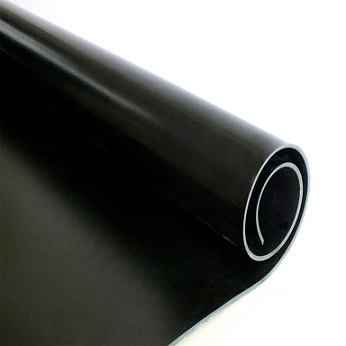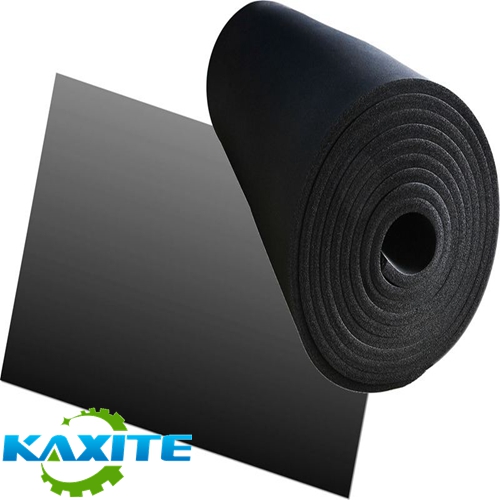Products
Rubber Gasket
Rubber is the most cost-effective material to use where temperatures and pressures are low and the chemical environment is mild. Different elastomers offer different mechanical and chemical properties. Cloth inserted materials are better able to handle movement and high compression loads.
Model:KXT-G2040
Send Inquiry
Product Description
Item NO. :KXT-G2040
Description
Rubber is the most cost-effective material to use where temperatures and pressures are low and the chemical environment is mild. Different elastomers offer different mechanical and chemical properties. Cloth inserted materials are better able to handle movement and high compression loads. Rubber gasket is cut or molded from NBR,SBR,CR,EPDM.Some rubber gasket have resisttance of oil,Some rubber gasket is used in cold fever,Some rubber gasket has anti-aging properties.There are various shapes of rubber gaske.Rubber gaskets are widely used in medicine, electronics, Chemical,anti-static,fire-retardant,food and other industries.Other rubber gaskets:neoprene rubber gaskets,natural rubber gaskets,EPDM rubber gaskets,acrylic plastic rubber gaskets and other special rubber gaskets.
Silicon Rubber Gasket
Silicon rubber gasket(WMQ)has outstanding low-temperature-resistant high-performance.BIK-silicon rubber gasket can be used in -70℃ - +260℃ temperature range.Silicon rubber gasket (WMQ) maintain good use of bombs.
Acrylonitrile-butadiene rubber gasket(NBR)
It is acrylonitrile butadiene copolymer from the emulsion polymer.Acrylonitrile-butadiene rubber gasket BIK-30207B has excellent oil resistance(but intolerance ketones, esters and chlorinated hydrocarbons, and other media).It also has a good abrasion resistance,anti-aging and air tightness and therefore the application of the rubber industry Wide.
Fluorine Rubber Gaskets
Fluorine rubber gaskets can be used in a high temperature from -30℃ to +250℃.It has the use of the environment, resistant to strong oxidant, oil. Normally,Fluorine rubber gaskets are used for high-temperature, high vacuum and high-pressure environment.Fluorine rubber gaskets is also suitable for oil environment. As with all high-performance, fluorine rubber is widely used in petroleum, chemical, aviation and aerospace sectors. Other rubber gasket:Neoprene Rubber Gasket(CR),Natural Rubber Gasket(NR),EPDM Gasket,ect.
Main Specification
| Material | Temp. (F) | P Max (psi) | Thick. (in.) | Applications/Features |
|---|---|---|---|---|
| Butyl | -40 to 225 | 150 | 1/16 to 1/4 | Gases, inorganic acids & alkalis. Excellent weather/abrasion resistance. |
| EPDM | -40 to 212 | 150 | 1/16 to 1/4 | Water, steam, animal/vegetable oils, oxygenated solvents. Excellent weather resistance. |
| Natural (Pure Gum) | -20 to 140 | 100 | 1/32 to 1 | Acids, organic salts & alkalis. Non-toxic. Abrasion resistant. Soft. |
| Neoprene | -20 to 170 | 150 | 1/32 to 2 | Oil/gasoline. Excellent weather resistance. |
| Neoprene - Cloth Inserted | -20 to 170 | 150 | 1/32 to 1/4 | Oil/gasoline. Excellent weather resistance. Handles movement. High tensile strength. |
| Nitrile (NBR, Buna-N) | -25 to 170 | 150 | 1/32 to 2 | Oil/Aromatic fuels, mineral, animal and vegetable oils, solvents and hydraulic fluid. Available in commercial, premium and FDA grades. |
| SBR (Red Rubber) | -20 to 170 | 150 | 1/32 to 1/4 | Air, hot/cold water. |
| SBR - Cloth Inserted | -20 to 170 | 150 | 1/16 to 1/4 | Air, hot/cold water, saturated/low pressure steam. Excellent for high compression loads. Handles movement. |
| Silicone | to 400 | 150 | 1/32 to 1/4 | High temperature air or water (not oil or steam). Soft. Available in FDA grade. |
| Vinyl | 20 to 160 | 150 | 1/16 to 1/4 | Water, oxidizing agents. Excellent weather/abrasion resistance. |
| Viton | to 400 | 150 | 1/32 to 1/4 | Oil/Aromatic fuels, mineral, animal and vegetable oils, solvents and hydraulic fluid. |
Warning
Gasket materials should never be recommended when both the temperature and the pressure are at the maximums listed. Properties and applications shown are typical. No application should be undertaken by anyone without independent study and evaluation for suitability. Never use more than one gasket in one flange joint, and never reuse a gasket. Improper use or gasket selection could cause property damage and/or serious personal injury. The data reported is a compilation of field testing, field service reports and/or in-house testing. While the utmost care has gone into publishing the information contained herein, we assume no responsibility for errors. The information and specifications contained in this website are subject to change without notice. This revision cancels and obsoletes all previous editions.







